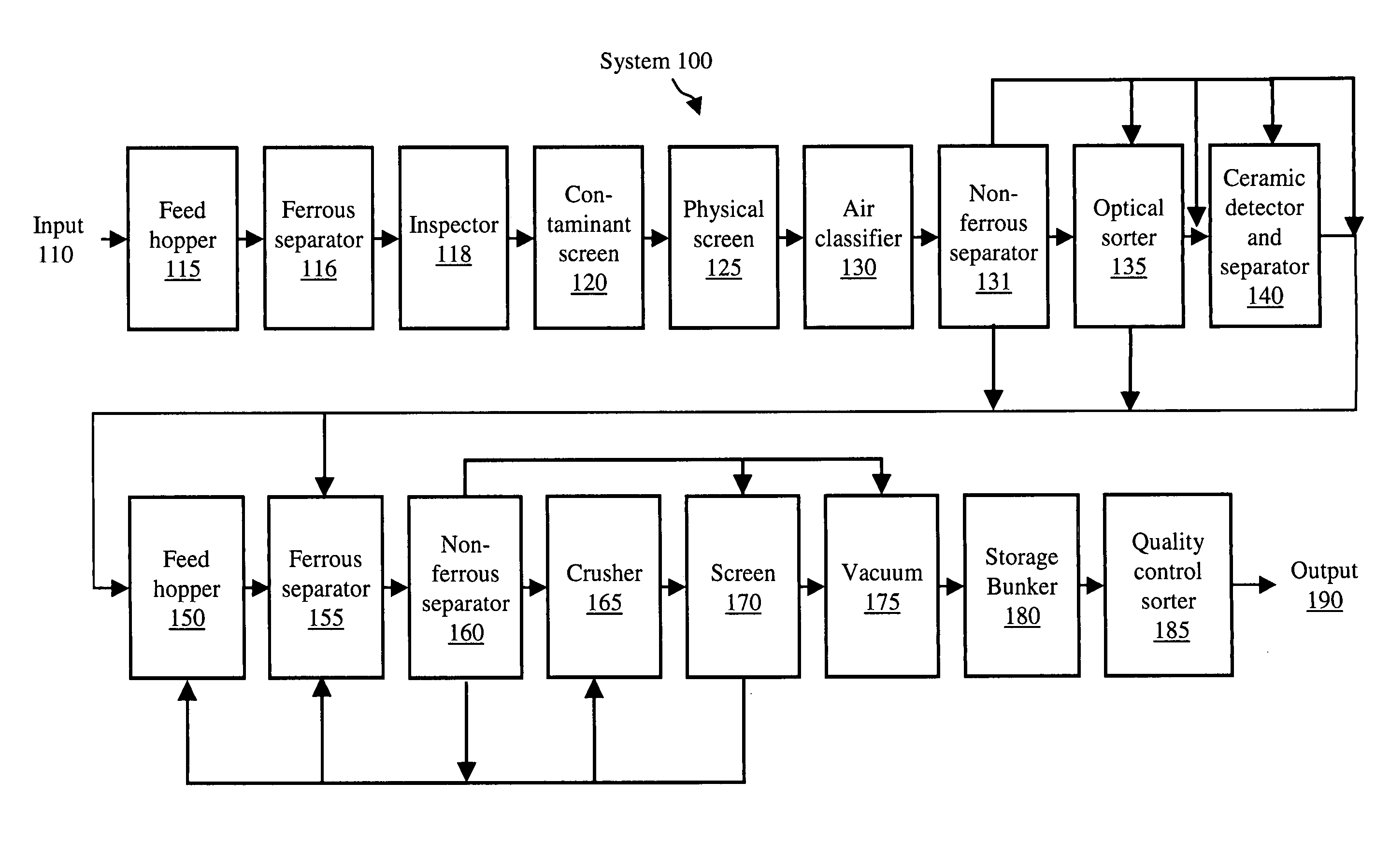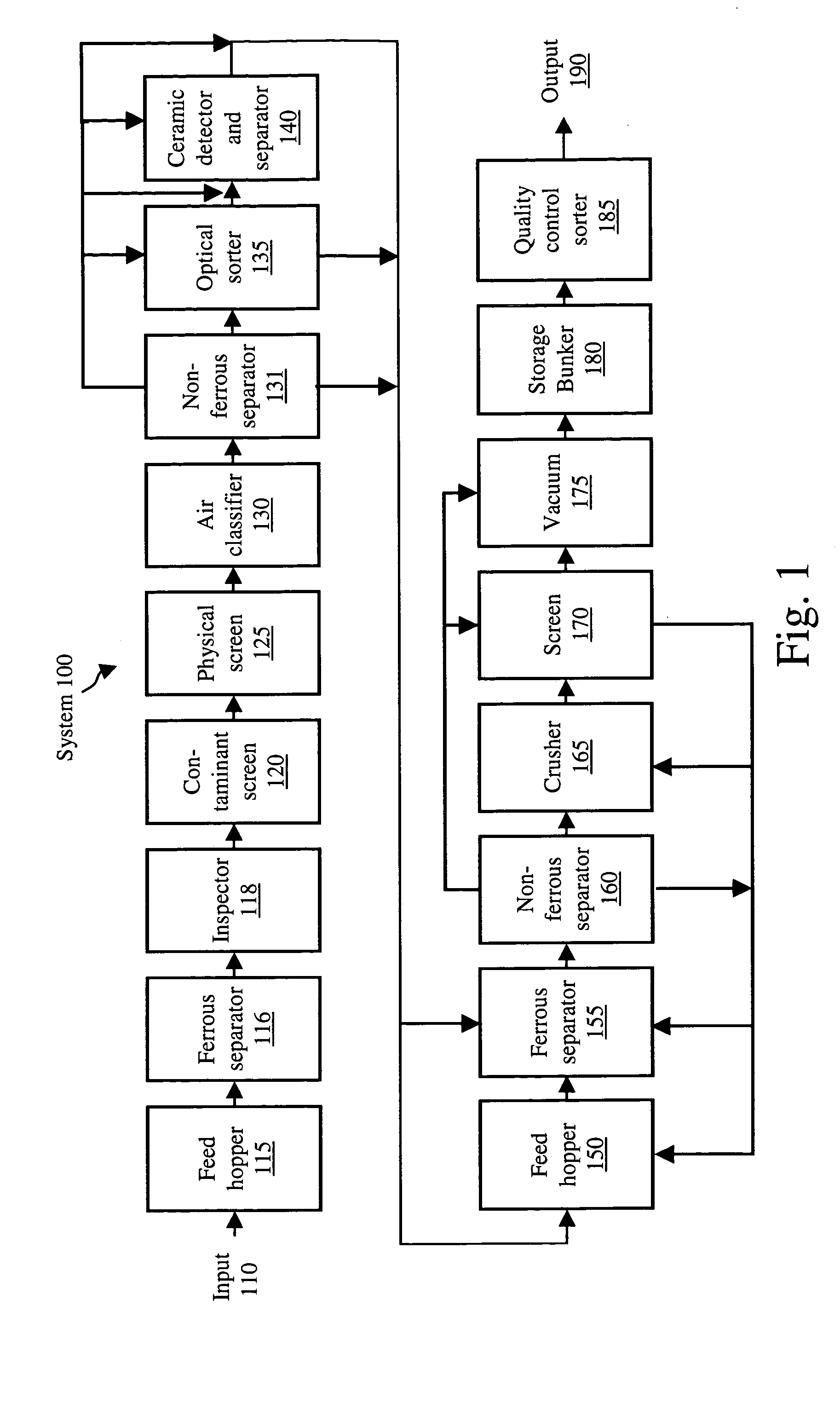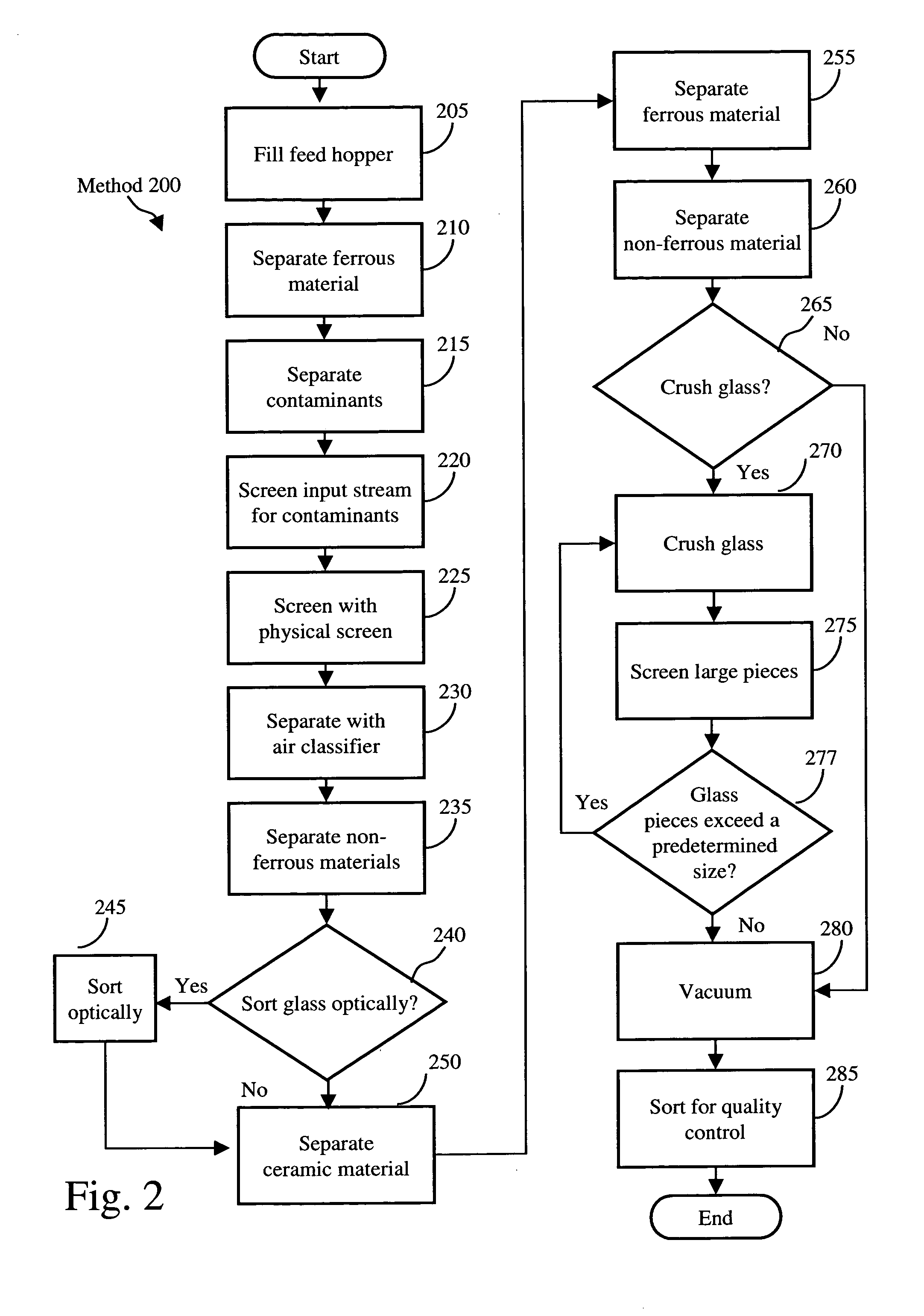Systems and methods for glass recycling at a beneficiator
- Summary
- Abstract
- Description
- Claims
- Application Information
AI Technical Summary
Benefits of technology
Problems solved by technology
Method used
Image
Examples
Embodiment Construction
[0018] The inventors have determined that it would be advantageous to simplify the glass sorting and cleaning process that can be used by a beneficiator; it would be advantageous to enable a beneficiator to recycle glass without having to sort the glass by color; it would be advantageous to enable a beneficiator to process mixed cullet as well as single-colored glass; and it would be advantageous to enable a beneficiator to combine increasing quantities of mixed cullet with a color sorted glass stream; and it would be advantageous to enable a beneficiator to supply glass plants with cullet that can be used in conjunction with, for example, the de-coloring / coloring technology described in U.S. Pat. Nos. 5,718,737 and 6,230,521, the disclosures of which are incorporated by reference in their entirety.
[0019]FIG. 1, generally at 100, illustrates a block diagram of an embodiment of an exemplary beneficiator glass recycling system in accordance with the invention. The method of FIG. 1 ut...
PUM
 Login to View More
Login to View More Abstract
Description
Claims
Application Information
 Login to View More
Login to View More - R&D Engineer
- R&D Manager
- IP Professional
- Industry Leading Data Capabilities
- Powerful AI technology
- Patent DNA Extraction
Browse by: Latest US Patents, China's latest patents, Technical Efficacy Thesaurus, Application Domain, Technology Topic, Popular Technical Reports.
© 2024 PatSnap. All rights reserved.Legal|Privacy policy|Modern Slavery Act Transparency Statement|Sitemap|About US| Contact US: help@patsnap.com










